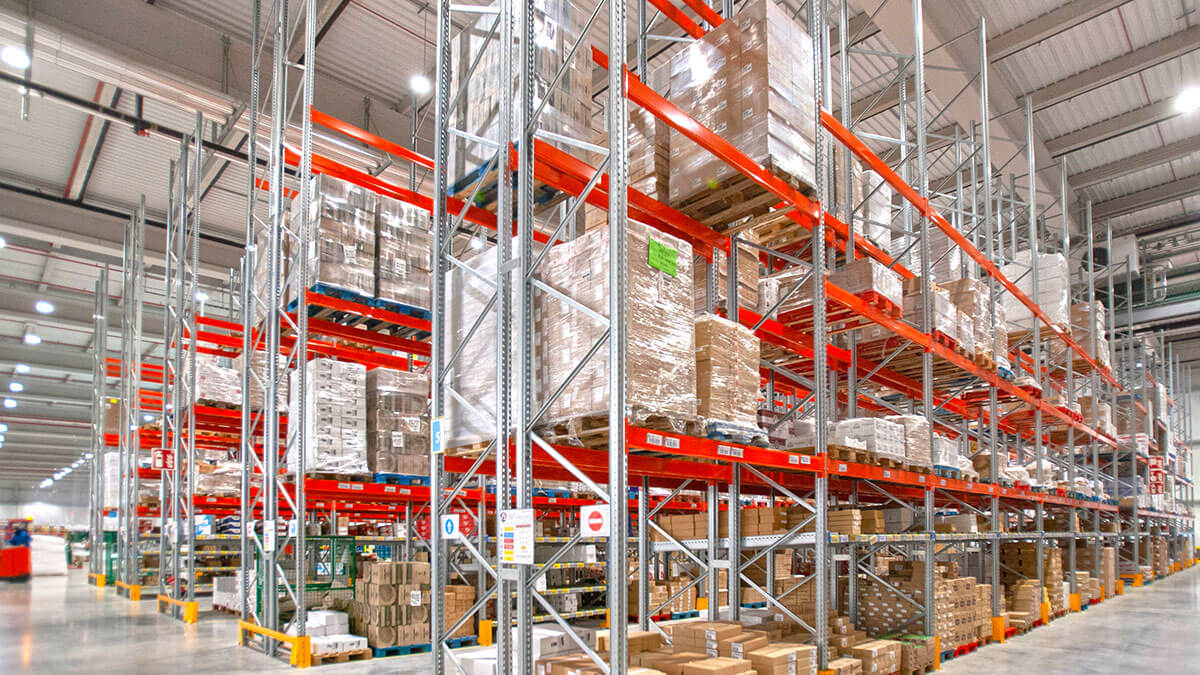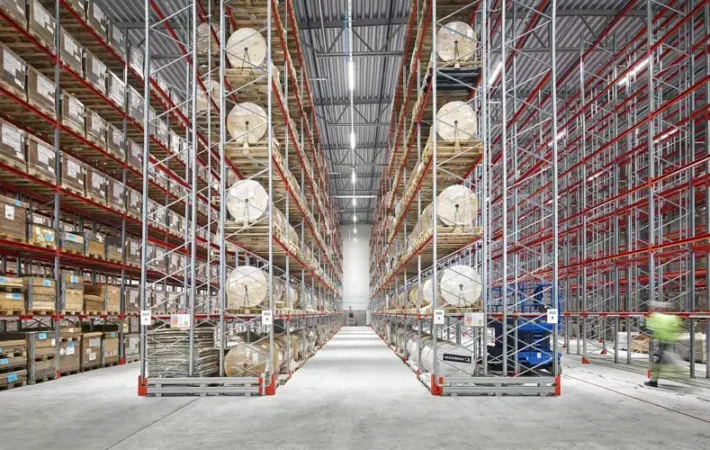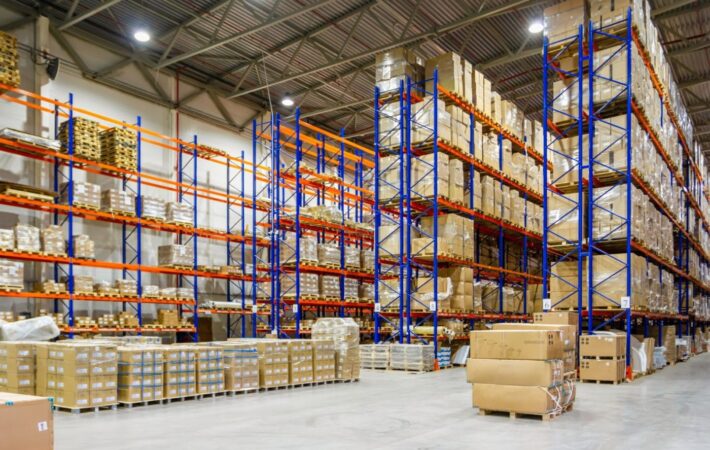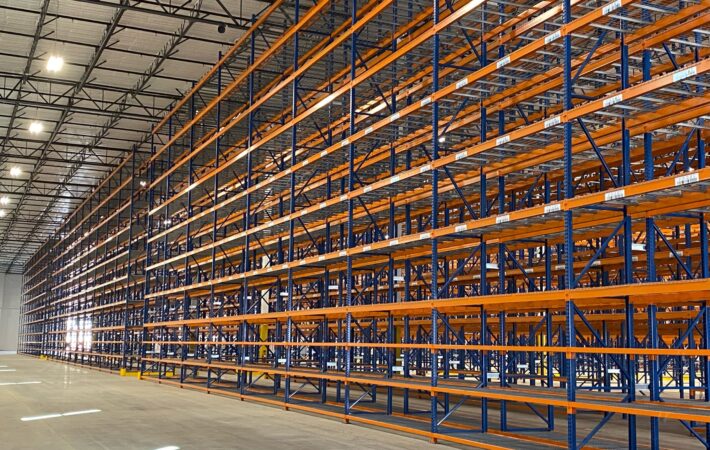When it comes to warehouse storage, pallet racking is one of the most crucial components that help businesses efficiently organize, store, and access their inventory. A well-designed pallet racking system allows warehouses, distribution centers, and storage facilities to maximize their available space, streamline material handling, and enhance overall operational efficiency. Without a structured pallet racking system, businesses would struggle with disorganized inventory, inefficient space usage, and increased labor costs due to delays in retrieving stored goods.
In today’s fast-paced logistics and supply chain environment, selecting the right pallet racking system is essential for businesses that want to optimize their storage solutions while maintaining easy accessibility to products. Warehouses that implement standard pallet racking benefit from a cost-effective and scalable storage system that allows for smooth inventory management and increased productivity.
This in-depth guide will explore the concept of standard pallet racking, how it works, the different types available, the benefits of using it, and why JB Equipment is your best choice for high-quality pallet racking solutions. Additionally, we will provide answers to frequently asked questions and important links to learn more about pallet racking and related services.
What Is Standard Pallet Racking?
Standard pallet racking is a structured warehouse storage solution that consists of metal racks specifically designed to hold palletized goods in an organized manner. The system enables warehouses to utilize vertical space efficiently while keeping pallets easily accessible for forklifts and warehouse workers. The design of pallet racking ensures that products are safely stored in a way that optimizes space usage and allows for easy loading and unloading.
In a standard pallet racking system, pallets are placed on horizontal beams supported by vertical upright frames. These beams and frames are engineered to hold large amounts of weight, making them ideal for industrial and commercial warehouses that handle high volumes of products. Standard pallet racking is versatile and can be adapted to fit different warehouse configurations, making it the preferred choice for businesses of all sizes.
Standard pallet racking systems typically consist of:
- Upright Frames – Vertical beams that support the entire racking structure.
- Horizontal Beams – Crossbeams that hold the pallets in place.
- Wire Decking – Mesh or solid panels that reinforce pallet support.
- Bracing and Safety Clips – Components that ensure structural stability.
To explore high-quality pallet racking options, check out JB Equipment’s Pallet Racking Solutions.
Why Is Pallet Racking Essential in Warehousing?
A well-designed pallet racking system is the backbone of an organized and efficient warehouse. Warehouses, logistics hubs, and distribution centers heavily rely on pallet racking to ensure smooth inventory management, prevent unnecessary clutter, and enhance operational workflow. Below are several key reasons why pallet racking is essential in warehouse operations:
1. Maximizes Storage Space
One of the biggest advantages of pallet racking is its ability to maximize warehouse space. By utilizing vertical storage, warehouses can significantly increase the amount of inventory stored without requiring additional square footage. This helps businesses save money on warehouse expansion while making the most of their existing space.
2. Enhances Warehouse Organization
A cluttered warehouse leads to inefficiencies, misplaced products, and delays in order fulfillment. With pallet racking, products are stored systematically, allowing employees to locate and retrieve inventory quickly. Proper warehouse organization reduces errors, speeds up processing times, and improves workflow efficiency.
3. Improves Workplace Safety
Poorly stacked inventory can pose significant safety risks, such as falling objects and potential injuries to workers. A professionally installed pallet racking system ensures that products are securely stored, reducing the risk of accidents. Additionally, JB Equipment provides high-quality pallet racking solutions that meet safety standards, ensuring that warehouses maintain a safe working environment.
4. Boosts Operational Efficiency
Time is money in warehouse management. With a properly structured pallet racking system, forklifts and warehouse staff can navigate storage areas efficiently, reducing the time spent on retrieving or storing products. Faster access to inventory means businesses can fulfill orders more quickly, improving customer satisfaction and reducing lead times.
For expert pallet racking solutions tailored to your warehouse needs, visit JB Equipment’s Services Page.
Types of Standard Pallet Racking Systems
Not all pallet racking systems are the same. Different warehouses require different configurations to optimize storage capacity and improve inventory management. Below are some of the most common types of standard pallet racking systems:
1. Selective Pallet Racking (Most Common and Widely Used)
- Provides direct access to every pallet, making inventory retrieval quick and easy.
- Ideal for warehouses with frequent stock movement and high turnover rates.
- Works well with most forklifts, allowing flexibility in storage and handling.
Read more about this popular system: What Is the Most Widely Used Pallet Racking System?.
2. Drive-In and Drive-Through Pallet Racking
- High-density storage that reduces aisle space requirements.
- Best for bulk storage where pallets of the same SKU are stored together.
- Suitable for businesses following the Last-In, First-Out (LIFO) inventory system.
3. Push-Back Pallet Racking
- Uses inclined rails that allow pallets to slide forward as new pallets are loaded.
- Maximizes storage capacity by reducing aisle space while maintaining selectivity.
4. Cantilever Racking
- Specifically designed for storing long and bulky items such as pipes, timber, and furniture.
- Provides open access for easy loading and unloading of irregularly shaped goods.
For expert installation and guidance on choosing the right pallet racking system, contact JB Equipment.
How to Choose the Right Pallet Racking System
When selecting a pallet racking system, consider these factors:
1. Inventory Type
- Perishable goods require FIFO (First-In, First-Out) racking.
- Bulk items are best suited for drive-in racking.
2. Warehouse Space
- Assess your floor space and vertical storage capacity.
- Consider aisle width to accommodate forklifts.
3. Load Capacity
- Standard pallet racking systems are built to handle heavy loads, but weight limits must be calculated carefully.
4. Durability and Safety
- Ensure racks meet safety standards.
- Review concrete requirements for pallet racking to ensure proper installation.
For customized warehouse solutions, explore JB Equipment’s About Us page.
Frequently Asked Questions About Standard Pallet Racking
Below are some of the most commonly asked questions regarding standard pallet racking:
1. What is standard pallet racking?
Standard pallet racking is a warehouse storage system that consists of metal racks used to store palletized goods efficiently. It allows for vertical storage while keeping inventory easily accessible.
2. What are the benefits of using pallet racking?
Pallet racking maximizes storage space, improves inventory organization, enhances warehouse safety, and boosts operational efficiency.
3. What is the most common pallet racking system?
Selective pallet racking is the most widely used system because it provides direct access to every pallet, making it ideal for warehouses with frequent stock rotation.
4. How much weight can pallet racking hold?
The weight capacity of pallet racking varies based on the rack’s design but typically ranges from 2,000 to 6,000 lbs per beam level.
5. Can pallet racking be customized for specific warehouse needs?
Yes! JB Equipment offers customized pallet racking solutions tailored to specific warehouse storage requirements.
6. How should pallet racking be installed?
Proper installation requires solid flooring and professional setup. Learn about flooring requirements here.
7. How tall can standard pallet racking be?
Most pallet racking systems range from 8 to 40 feet, depending on warehouse height and weight load requirements.
8. Where can I purchase high-quality pallet racking?
For premium-quality pallet racking, visit JB Equipment’s Pallet Racking Page.
Why Choose JB Equipment for Your Pallet Racking Needs?
JB Equipment is a leading supplier of high-quality pallet racking solutions in Canada. Here’s why they’re the trusted choice for warehouses and industrial facilities:
- Wide Range of Pallet Racking Systems – From selective racking to cantilever storage, they offer solutions for every storage need.
- Expert Consultation & Custom Solutions – They provide tailored recommendations for optimal warehouse efficiency.
- High-Quality Materials – JB Equipment’s pallet racking is built for durability and long-term performance.
- Safety & Compliance – They ensure all racks meet industry safety standards.
- Professional Installation Services – Their team handles everything from planning to execution.
Get in touch with JB Equipment for expert advice and professional racking installation:
🔗 Explore Pallet Racking Solutions: Click Here
🔗 Learn About JB Equipment: Click Here
🔗 Request a Consultation: Click Here
Conclusion
Standard pallet racking is an essential component of modern warehouse management. Whether your business requires selective racking for easy access, drive-in racking for bulk storage, or cantilever racking for oversized items, choosing the right system ensures maximum efficiency, safety, and productivity.
For the best pallet racking solutions, trust JB Equipment. Their top-quality products, expert consultation, and professional installation services make them the go-to provider for all pallet racking needs.
Upgrade Your Warehouse Today – Contact JB Equipment!




